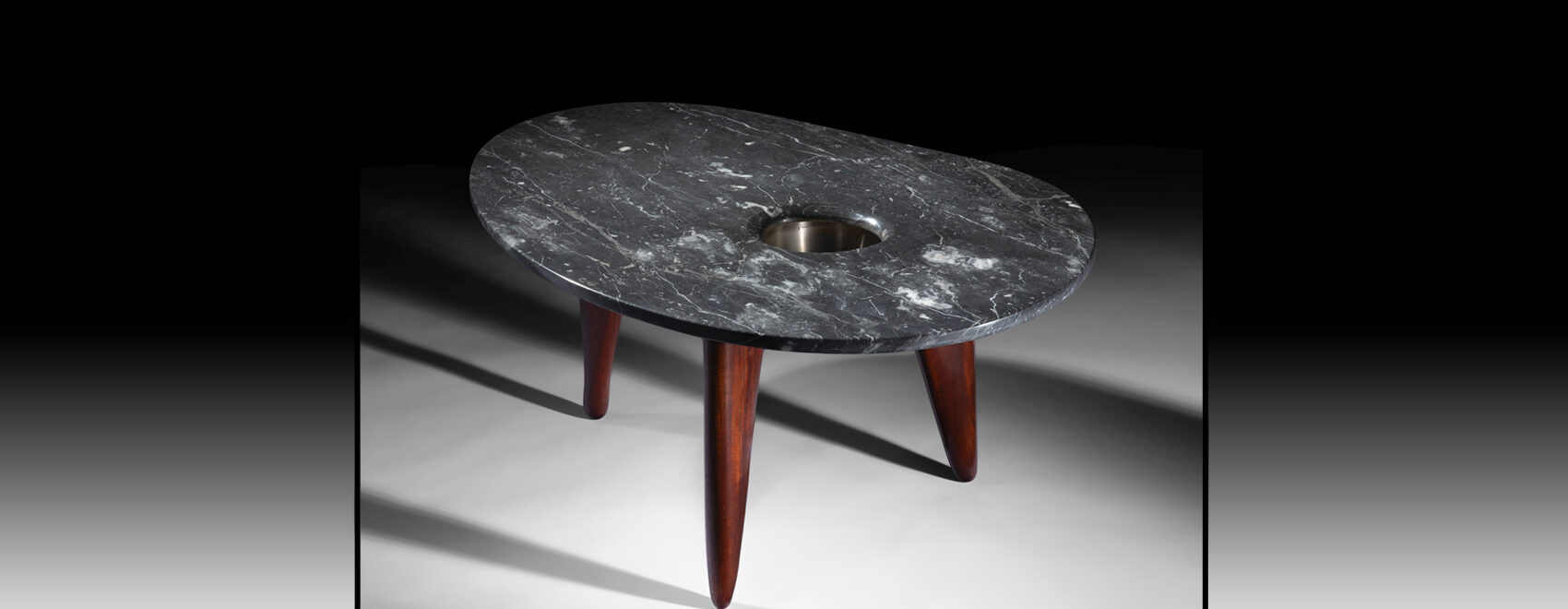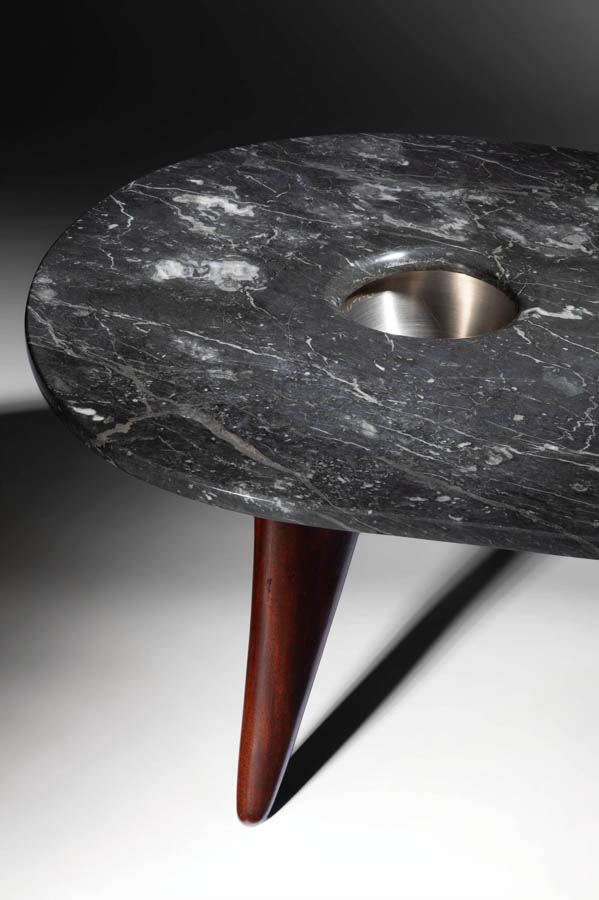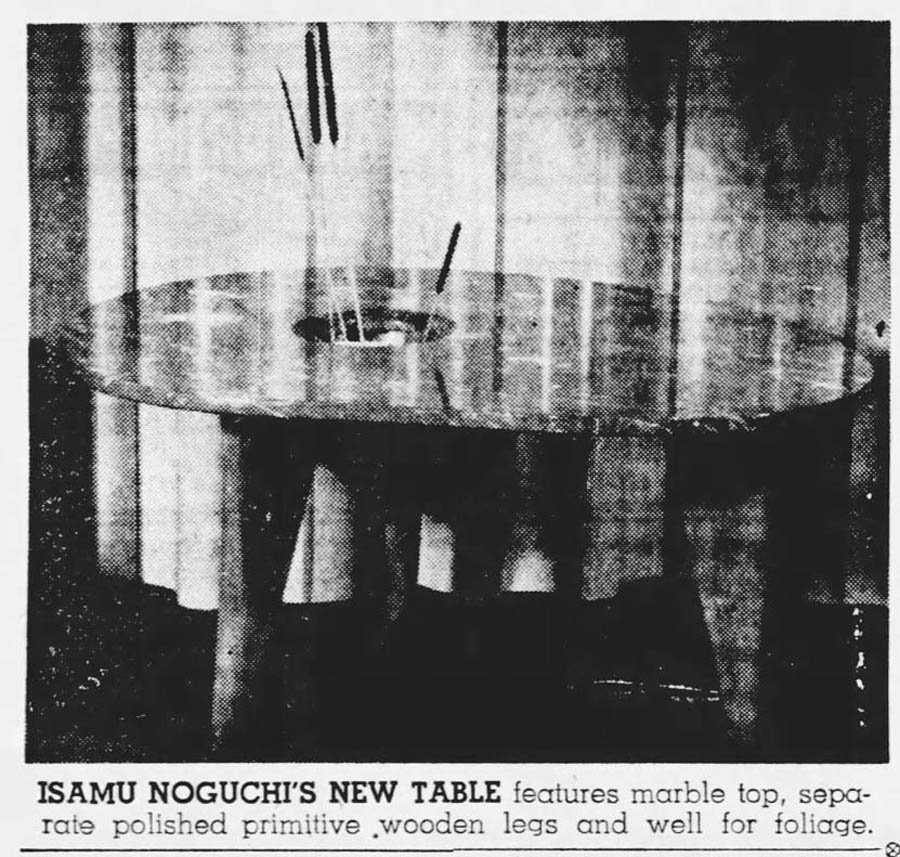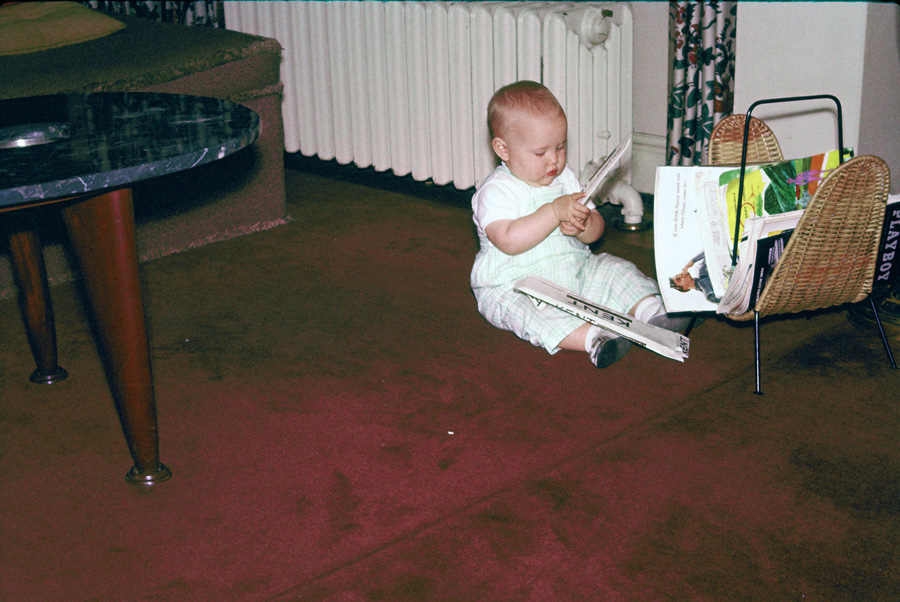THE HANDMADE MARBLE-TOPPED TABLE IS ONE OF ONLY FOUR KNOWN EXAMPLES AND HAS BEEN IN ONE FAMILY’S HOME FOR MORE THAN SIX DECADES
By Christina Rees
Even in the most informal households, there are often a few things that parents implore their kids to be careful around. A favorite chair, a keepsake rug, an inherited painting. When Pam Richardson thinks about a certain coffee table that was a family fixture during her formative years and beyond, she can still hear her mother’s voice: “Please be careful of it!”
“My parents, and especially my father, had a good eye,” Richardson says. “Sometimes I’d ask him about the things we had and he wouldn’t tell me very much, but the table was always in the house.” Growing up, Richardson knew the living room table was special; she just didn’t know how special until she recently connected with Heritage Auctions’ Design specialists.
The marble-topped Isamu Noguchi table offered in Heritage’s November 22 Design® Signature Auction is one of four similar tables the famed sculptor made between 1945 and 1947.
“The week between Christmas and New Year’s is typically slow in the auction business, but I picked up the phone when it rang. And I am so glad that I did!” says Samantha Robinson, Heritage’s Chicago-based Director of Decorative Arts & Design. “An appraiser representing our consignor mentioned a marble-topped coffee table. I requested photos, and I nearly fell off my chair when I received them. We confirmed that it was not only a work by Isamu Noguchi, but an extremely important and valuable one.”
Heritage specialists informed Richardson that the family favorite is as rare and desirable as any work Noguchi ever brought to life. The historically significant table, sculpted between 1945 and 1947, is one of only four known examples of the famed artist’s creation, later released by the manufacturer Herman Miller as model IN-62 in an equally limited quantity. One of the four tables resides in the collection of a Noguchi relative, and the other two, one of which sold at auction in 2021 for more than $1 million, are in private collections. On November 22, during Heritage’s Design Signature® Auction, this fourth example to come to light, now enumerated in the Isamu Noguchi Catalogue Raisonné as 809A-4, will hit the auction block after its lifelong stint in the Richardson household.
Noguchi was one of the most innovative and renowned makers of the 20th century. Born in Los Angeles to American and Japanese parents, Noguchi was a sculptor in New York before going to work in Constantin Brancusi’s Paris studio in 1927. His work and study under Brancusi helped develop the distinctive modern style that became synonymous with Noguchi’s name – precisely sculpted biomorphic forms utilizing both traditional and brand-new materials.
“By the mid-1940s, Noguchi had developed into an artist and designer seemingly without categorical boundaries,” says Michael Hartman, Heritage’s Director of Design. “Working in sculpture, industrial design, landscape design, set design, architecture and other disciplines, Noguchi was eager to collaborate with his contemporaries in American postwar culture while engaging with the marketplace to see his designs work their way into the lives of everyday Americans.”
The table’s inset aluminum bowl serves as a ‘well for foliage,’ as a period advertisement described it.
The table emerges from this moment in American history and Noguchi’s career. It features a biomorphic marble top with an elliptical aperture and an inset metal bowl supported by three distinctly shaped legs. The perforated and tripod form relates to Noguchi’s sculptural work of this period and explores the interplay between the work and the negative space within and around it. The hand-worked surfaces of the top and legs set it apart from later, related Herman Miller production-line examples of the design, of which only four are known.
Says New York- and London-based curator, writer and historian Glenn Adamson of the table’s innovative design: “It makes sense to view the table as a kit of six parts – three legs, metal bowl, plywood support, marble top – for that is how Noguchi himself approached the making of it. Look closely at the legs and you’ll see each has its own unique silhouette, not derived in any obvious way from the amorphous silhouette of the top.” Adamson notes that when you look at the table from any distance, “what will likely impress you most is its unexpected unity. Noguchi’s greatest gift as a sculptor was his combinatory intelligence. Again and again over the course of his career, he put simple forms and unlike materials together, and forged something unforgettable. Today, fully seven decades after its creation, this table retains this quality of discovery.”
A photograph of ‘Isamu Noguchi’s new table’ featured in the July 10, 1948, issue of the ‘Miami Herald’
The recorded history of this particular example makes it a standout. The archives of Herman Miller, which produced designs by Noguchi and other designers in this period, indicate that it debuted at their showroom at Chicago’s Merchandise Mart in conjunction with a “Summer Furniture Market” that opened July 5, 1948. An internal memo reads: “Isamu Noguchi is adding to his collection the IN-61 chess table and the IN-62 marble top table, both with sculptored [sic] bases which are typical of Noguchi’s work.” A few days later, the Miami Herald published an article about the wares displayed at the Merchandise Mart accompanied by a photograph of the table with the caption “ISAMU NOGUCHI’S NEW TABLE.”
That same year, Richardson’s father, Willard, was hired at Marshall Field’s, the iconic department store and original proprietor of the Merchandise Mart just a stone’s throw away. While the precise sequence of events is unknown, one can imagine a young Willard Richardson walking from showroom to showroom, the enigmatic table catching his eye. One thing is certain: It was acquired by Willard and remained in the Richardson family’s collection for more than 60 years, eventually traveling with the family from the Chicago area to Southern California. Charmingly, it’s pictured again and again in family photos: There it is, holding its own in vintage snapshots of Christmas gatherings, cocktail hours, Pam Richardson as a baby and later in her youthful formal-dress pose.
Consignor Pam Richardson as a baby next to the Noguchi creation her family cherished for decades
“The table has remained in this original owner’s family until now, providing a central gathering point for decades of holiday celebrations and quiet evenings at home,” Robinson says. “While the table was certainly selected by Mr. Richardson for its unusual style and functionality, the family remained unaware of its rarity and important place in modern design history until Pam Richardson’s appraiser contacted Heritage for review by our team.”
“Heritage is immensely proud to bring this Noguchi masterwork to market,” Hartman adds. “And, through a dedicated catalog and fall events at our galleries, we will explore the table’s historical context and the legacy of its stewardship by a typical American family.”
The table will be available for preview at Heritage’s Chicago showroom from November 11-15 and in Dallas from November 20-21.
 CHRISTINA REES is a staff writer at Intelligent Collector.
CHRISTINA REES is a staff writer at Intelligent Collector.






